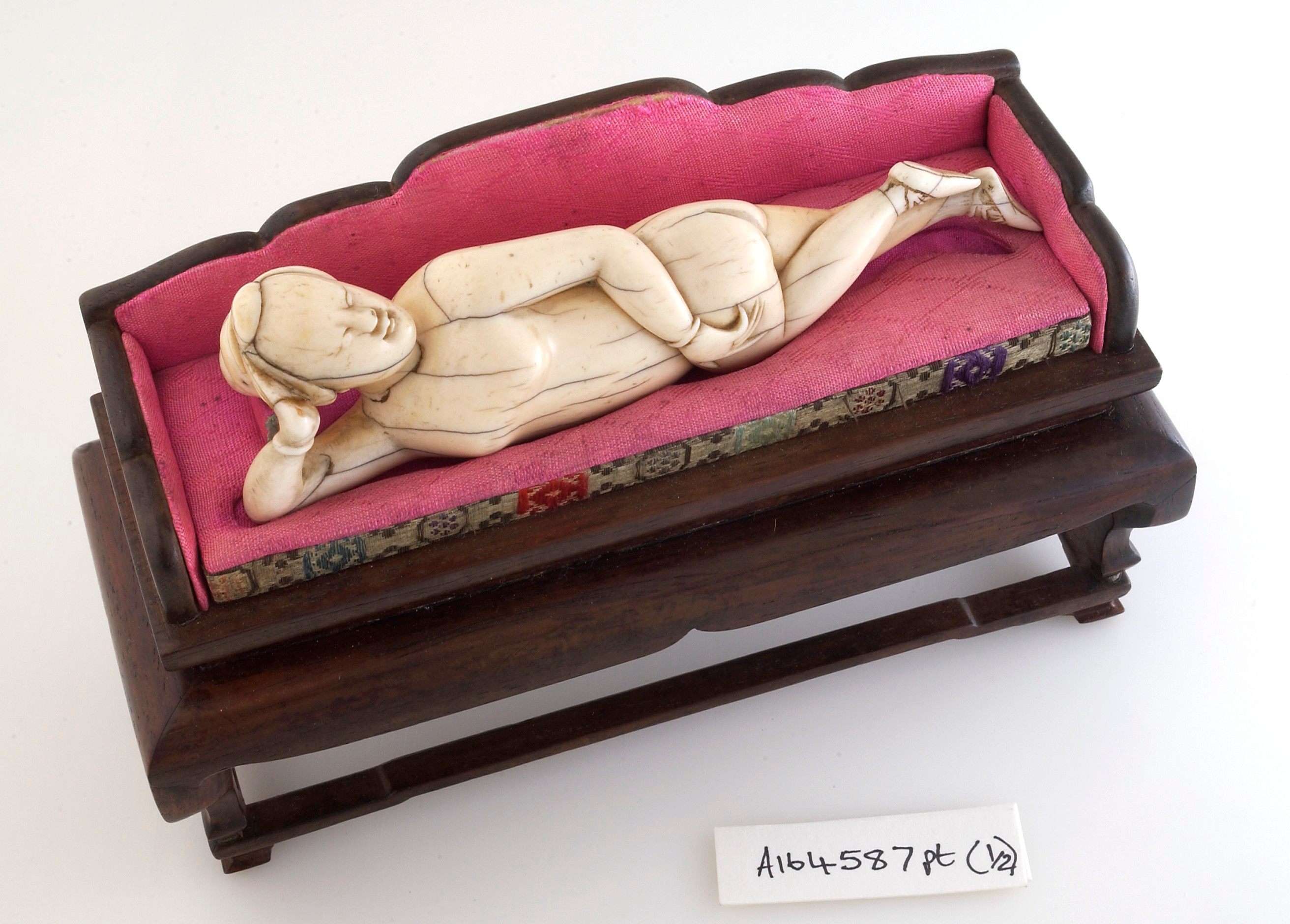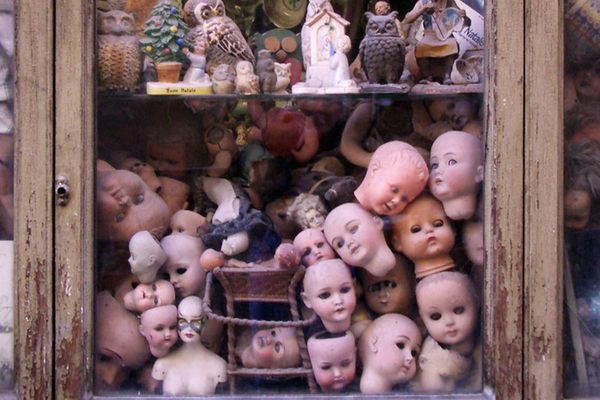Chinese Women Once Had to Point Out Their Medical Troubles on Ivory Dolls
For centuries, miniature ivory women helped real women seek medical help.

Often when a woman saw a doctor in 18th-century China, she wasn’t allowed to actually see him. Instead, she sat behind a curtain or bamboo screen, where she had to map out her pain on a body that wasn’t her own. Her hand, or that of a close female attendant, would poke through the drapes or screen, and gesture toward the naked body of an ivory doll. If the patient had difficulty breathing, she might run a finger along the doll’s curved chest. For menstrual pain, the smooth abdomen. For a headache, the bump of a bun. After studying these cryptic communications, the doctor would issue his diagnosis.
In the final centuries of China’s Qing Dynasty, these intricately carved medicine dolls were an ailing woman’s only option, writes medical historian Howard Dittrick in his 1952 paper in the Bulletin of the History of Medicine, “Chinese Medicine Dolls.” From the 1300s to the late 19th century, China’s Ming and Qing Dynasties had ushered in a cult of chastity that made it impossible for a doctor to physically examine a female patient, or for her to undress before him. And at the time, China only allowed men to be doctors. In 1879, the Canton Missionary Hospital became the first medical institution to admit women to their medical class, according to a Columbia University dissertation on Chinese medical care for women in the late-19th and early-20th centuries, by Shing-ting Lin. This decision was made not out of some feminist ideal, but rather in reaction to the belief that male physicians should not be touching female patients.

Chinese diagnostic dolls depict a reclining woman, usually naked save for a pair of bangles around her wrists and the occasional fan. Though most dolls were carved out of ivory, they could also be sculpted of jade, amber, bronze, wood, or even lapis lazuli. Dittrick notes the dolls all strike the same pose: propped up on the left arm, with the other draped across the body. Carvers did distinguish adult women, with hair tied up in a bun, from girls with braids or twin ponytails. Early carvings also often depict Chinese women with shrunken lotus feet, a pretty term for the painful and eroticized practice of footbinding. To retain a degree of modesty, the dolls’ feet were always shod in shoes or constricting bandages.
Upper-class women might bring their own beautiful, customized dolls to doctors, whereas poorer women had to make do with the doctor’s own, more rudimentary, model. The more luxurious dolls—such as the intricate Ming Dynasty doll shown above on a blue blanket—reclined on miniature couches, some of which even featured silk cushions or embroidered throws. To remove the final layer of interpersonal contact, wealthier ladies simply marked the afflicted parts of the doll with India ink or charcoal, and then sent the doll to the doctor via messenger.
The physicians of late imperial China saw no issue with diagnosing and treating patients on the basis of pointing and words alone (or even less). In fact, it was close to the primary practice at the time for male patients as well (though men had no issues with disrobing before a doctor), as scholarly doctors found physical contact to be beneath them, writes Shing-ting Lin. Unsurprisingly, the smooth, polished surfaces of an ivory doll proved insufficient for certain female medical concerns. Midwives and other lower-class female workers would have had to take charge of anything gynecological or obstetric, such as period management or childbirth.





























Follow us on Twitter to get the latest on the world's hidden wonders.
Like us on Facebook to get the latest on the world's hidden wonders.
Follow us on Twitter Like us on Facebook